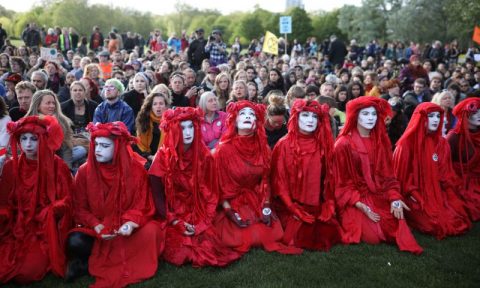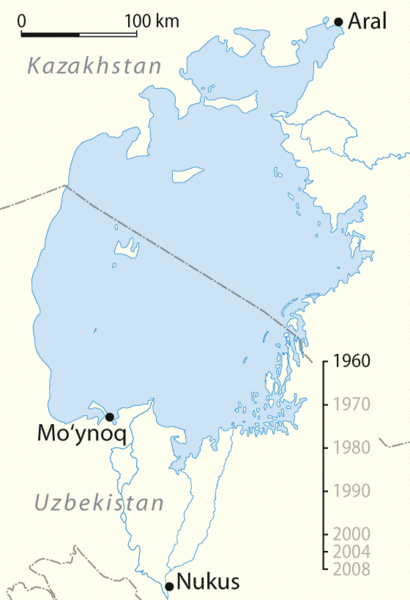Luke Warren on the vast gulf between the “environmental consciousness” of fans of the socialist worldview and the real-world environmental impact of socialist policies:
Modern environmentalists often identify as socialists. Members of Extinction Rebellion, for example, often advocate tearing down capitalism and supplanting it with “eco-socialism”. Go to any “climate strike” or similar type of event, and you will see more hammer and sickle flags, raised fist symbols and Socialist Workers party posters than you can count.
Indeed, socialism and environmentalism are perceived by many as two sides of the same coin, and the idea that climate change is a “crisis of capitalism” has become conventional wisdom. It is now seemingly a contradiction to be both a capitalist and an environmentalist. This is not just a matter of rhetoric, but it is also reflected in the policy prescriptions of both environmentalists and socialists. Look at proposals for a “green new deal”, calls for large-scale nationalisation in the name of the environment.
But what is the story of socialism and environmentalism?
One only has to look back at the failed experiments of socialism to see just how environmentally catastrophic it has been. As the Soviet Union collapsed and the iron curtain was torn down, the rest of the world finally saw the environmental damage caused by socialist command economies. Economist Jeffrey Sachs stated that the socialist states had “some of the worst environmental problems on the entire globe” All of this, it is worth noting, occurred against a backdrop of a wide array of environmental laws and regulations that supposedly protected the public interest.
Air pollution provides an excellent example. Total greenhouse gas emissions in the USSR in 1988 equated to 79 per cent of the US total. However, the Soviet Union’s gross national product (GNP) was only 54 per cent of the USA’s, according to one very generous estimate (it was, in all likelihood, far less than that). This means that the USSR generated at least one and a half times as much pollution as the USA per unit of GNP (and again, in all likelihood, far more than that).
Accounts of those who travelled across the Soviet Union post-collapse recall swathes of the country where smog clung to the air. An article from Multinational Monitor in 1990 highlighted that 40 per cent of the Soviet people lived in areas where air pollutants, such as carbon dioxide, sulphur dioxide and nickel dioxide, were three to four times the maximum allowable levels.
The destruction of the Aral Sea, perhaps one of the worst environmental disasters, can be directly blamed on the process of socialist planning. In an attempt to make the USSR self-sufficient in cotton production, vast amounts of water were diverted to arid areas for irrigation. Much of the Aral Sea dried up, leaving port cities, Muynak for example, and fishing villages marooned miles from the shore. Worse, the exposure of the salty sea bed and extensive use of pesticides had catastrophic impacts on the health of the local population. Respiratory problems and lung diseases became widespread as people inhaled pollutants.







See also the former East Germany, which cost billions (pick your currency ) to clean up post reunification.
) to clean up post reunification.
Also, it may have just been a writing time limitation, but you forgot about the island in the Aral Sea that was used as a bioweapon research facility, Vozrozhdeniya Island, where they researched such lovely stuff like anthrax, smallpox, bubonic plague, and the like. The shrinking sea eventually turned the island into part of a peninsula, and after the USSR collapsed Russia abandoned the facility with their usual concern for safety and the environment (that is, just about none).
Comment by Nohbody — April 14, 2020 @ 08:35
I was vaguely aware that the lake bottom was contaminated, both with industrial runoff and with the results of some weapons testing, as mentioned in a post from 2014:
The receding sea has left huge plains covered with salt and toxic chemicals – the results of weapons testing, industrial projects, and pesticides and fertilizer runoff – which are picked up and carried away by the wind as toxic dust and spread to the surrounding area. The land around the Aral Sea is heavily polluted, and the people living in the area are suffering from a lack of fresh water and health problems, including high rates of certain forms of cancer and lung diseases. Respiratory illnesses, including tuberculosis (most of which is drug resistant) and cancer, digestive disorders, anaemia, and infectious diseases are common ailments in the region. Liver, kidney, and eye problems can also be attributed to the toxic dust storms. Health concerns associated with the region are a cause for an unusually high fatality rate amongst vulnerable parts of the population. The child mortality rate is 75 in every 1,000 newborns and maternity death is 12 in every 1,000 women. Crops in the region are destroyed by salt being deposited onto the land. Vast salt plains exposed by the shrinking Aral have produced dust storms, making regional winters colder and summers hotter.
Comment by Nicholas — April 14, 2020 @ 08:50